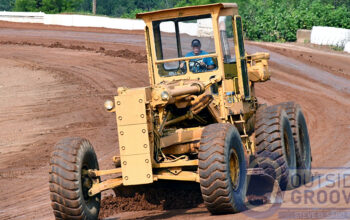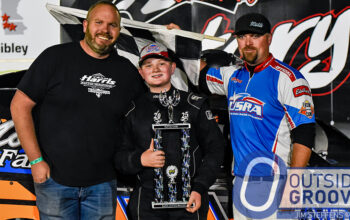Clint Gann, promoter of Lebanon Midway Speedway, is betting on the LS engine to save racing. Even if that means losing sanctions for some of the track’s divisions.
The Missouri track will allow the LS in all of its divisions for the 2023 season.
“When Chevrolet introduced the LS in the late 1990s, it took the world by storm,” Gann said. “The engine has now been around for more than 20 years and it is not being utilized in [oval-track] racing. Racers are still insistent on using the small-block Chevy, even though they’re nearly impossible to find in recycling yards these days.”
Lebanon Midway Speedway prohibits aftermarket engine blocks. Gann said the LS engine offers great savings when compared to the traditional small-block Chevy.
“We have to have a solution to the lack of available blocks and the cost of using them — the small-block Chevy is no longer an option,” Gann said. “There are thousands of Chevy trucks and Tahoes with 4.8- and 5.3-liter engines in recycling yards everywhere. You can do a direct pullout for $500 or less.”
In addition, Gann pointed out the reliability of the engines, despite having high miles.
“You can race a used LS engine, rev it to the moon, and it won’t come apart as long as it has oil and it isn’t overheated,” said Gann. “A well-maintained LS is indestructible.”
The prowess of an LS — its longevity and the propensity to make easy (and cheap) power — is well known outside of ovals. Drag racers, road racers, drifters, and hot rodders have been doing LS swaps for years.
“I’m simply adding an engine option,” Gann said. “Guys with the built SBC engines of yesteryear are worried that these smaller cubic-inch engines will outrun their expensive SBCs. Unfortunately, old technology no longer works like the new technology does.”
Gann has drawn up a parts list for the LS engine option. The track will not permit EFI, but instead will mandate a Holley 4412 2-bbl carburetor. That will mate to an Edelbrock intake manifold. Likewise, no coil packs, but instead racers will use a distributor placed on the front of the engine. Lastly, racers must use a belt-driven fuel pump.
“The additional parts needed to make the LS block race-ready are available for $500 used to $2,000 out of the catalog,” said Gann. “It is still less expensive than an SBC.”
Despite the potential cost savings, Gann found resistance from beyond his own racers.
“The sanctioning bodies are stuck in 1985,” Gann said. “They seem to have no knowledge of the LS. IMCA, USRA, POWRi were all created by one man. If need be, I’ll be the one man who starts a new sanctioning body allowing LS engines. I’m willing to stand alone if others don’t see the natural progression of where we are going.”
Lebanon Midway Speedway won’t totally be alone in the Show Me State. Historic Bolivar Speedway will also permit LS engines at their track.
POWRi told Gann they won’t sanction classes that use the LS. USRA said they remain undecided.
“There are about 70 cars that support me,” said Gann. “Our numbers will increase drastically next year. I may be a little unorthodox with my ideas, but I will push the envelope as far as I can. I want to change the world of racing on dirt, if I have to do it by myself.”
Mike Adaskaveg has written hundreds of stories since the website’s inception. This year marks his 54th year of covering auto racing. Adaskaveg got his start working for track photographer Lloyd Burnham at Connecticut’s Stafford Motor Speedway in 1970. Since then, he’s been a columnist, writer, and photographer, in racing and in mainstream media, for several outlets, including the Journal Inquirer, Boston Herald, Stock Car Racing, and Speedway Illustrated. Among Adaskaveg’s many awards are the 1992 Eastern Motorsport Press Association (EMPA) Ace Lane Photographer of the Year and the 2019 National Motorsports Press Association (NMPA) George Cunningham Writer of the Year.





